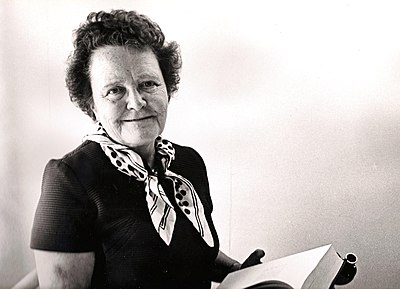Ruth Patrick
Ruth Patrick (1907 - 2013) was an influential American botanist who pioneered environmental science and pollution control efforts. Specializing in diatoms and freshwater ecology, she developed ways to measure the health of water bodies and wetlands. From 1933 until her death, she worked at the Academy of Natural Sciences in Philadelphia. In 1948, she founded (and funded) the Patrick Center for Environmental Research (PCER) within the Academy. During her lifetime, she created numerous partnerships with industry for monitoring of water pollution and published many scientific papers and books about freshwater diatoms[1].
In 1933, as she neared completion of a Ph. D. in botany from the University of Virginia, she moved to Philadelphia for access to Diatom Herbarium of the Academy of Natural Sciences of Drexel University, where she worked as a volunteer for four years. In 1937, she received an unpaid academic appointment as staff at the Academy and continued working full-time unpaid for another eight years.
Ruth Patrick worked behind the scenes in Washington and elsewhere to shape important pieces of environmental legislation, including helping the United States Congress develop the Clean Water Act (enacted in 1972). She served the U.S. Congress for several decades as a non-partisan advisor on waterway pollution beginning with the Johnson administration in the 1960's. In 1996, President Bill Clinton awarded her the National Medal of Science[2].
==Footnotes==
- ↑ In Memoriam: Ruth Patrick (1907-2013), by Robert McCracken Peck on the American Society of Naturalists website. Posted on 11-13-2013. Last access 4/17/2022
- ↑ Clinton White House Archives which recognizes that Ruth Patrick's work had become the basis for much of environmental research. Last access 4/17/2022.
